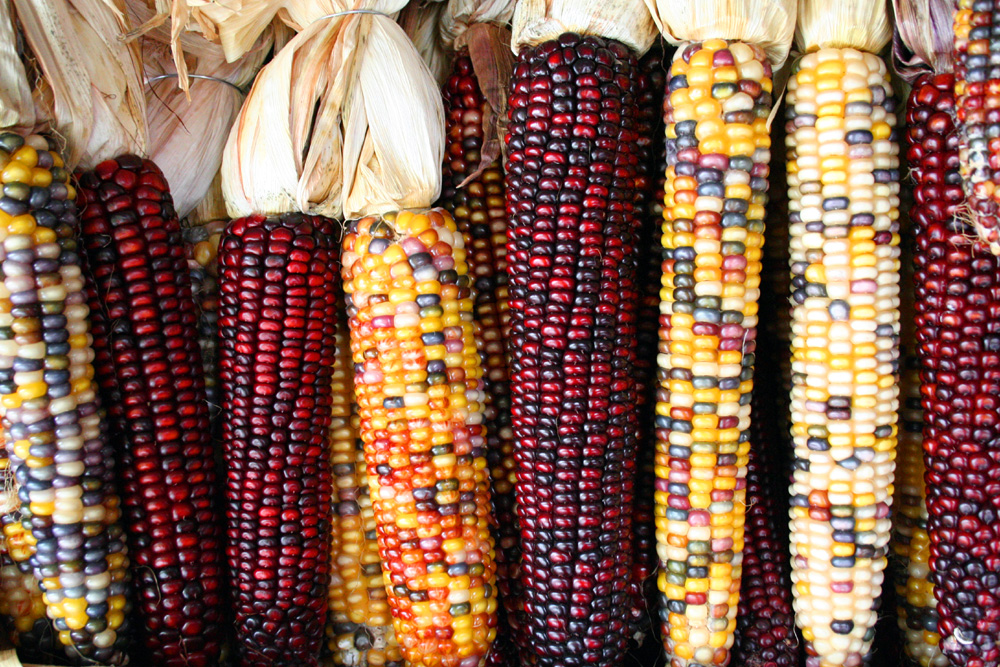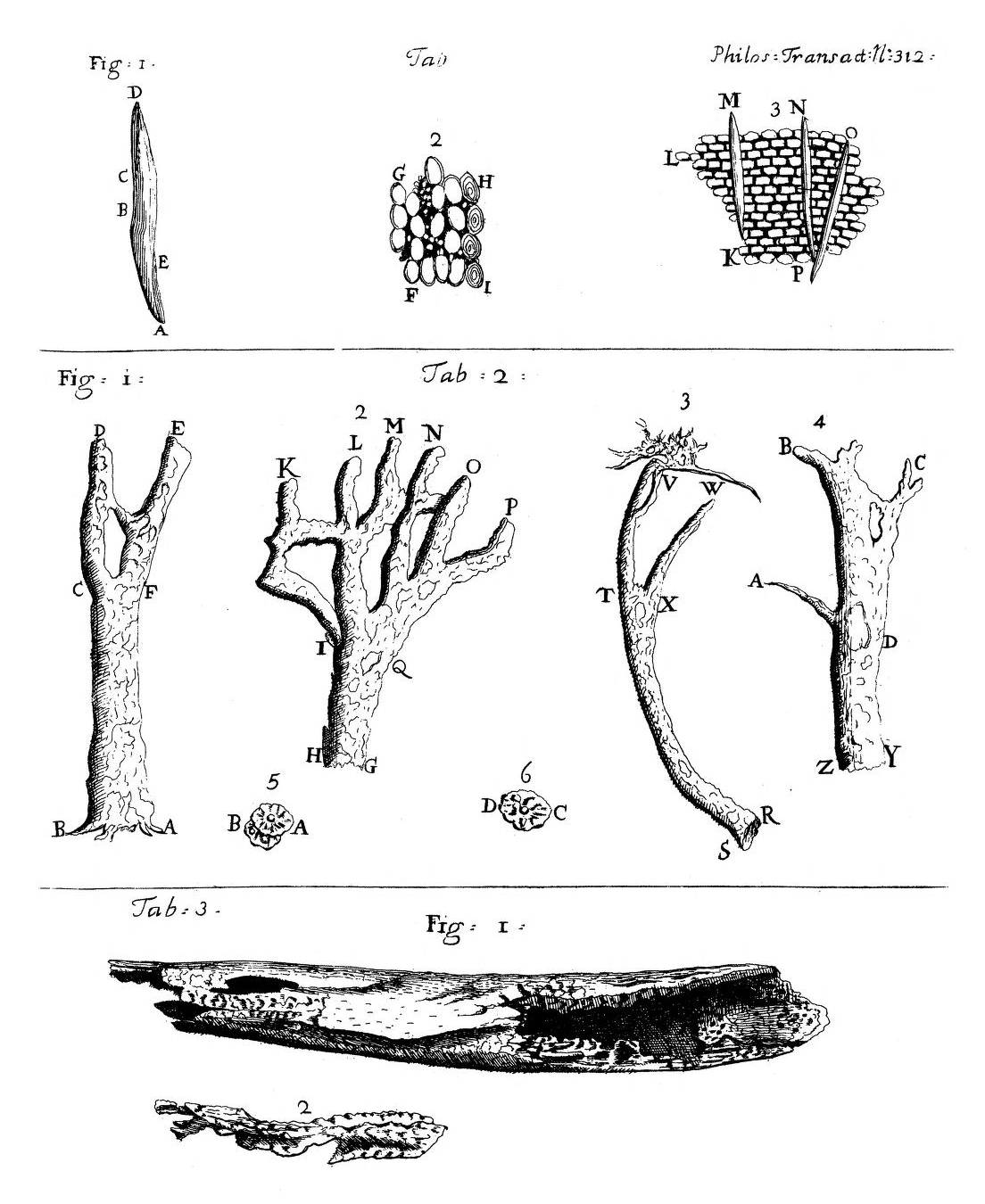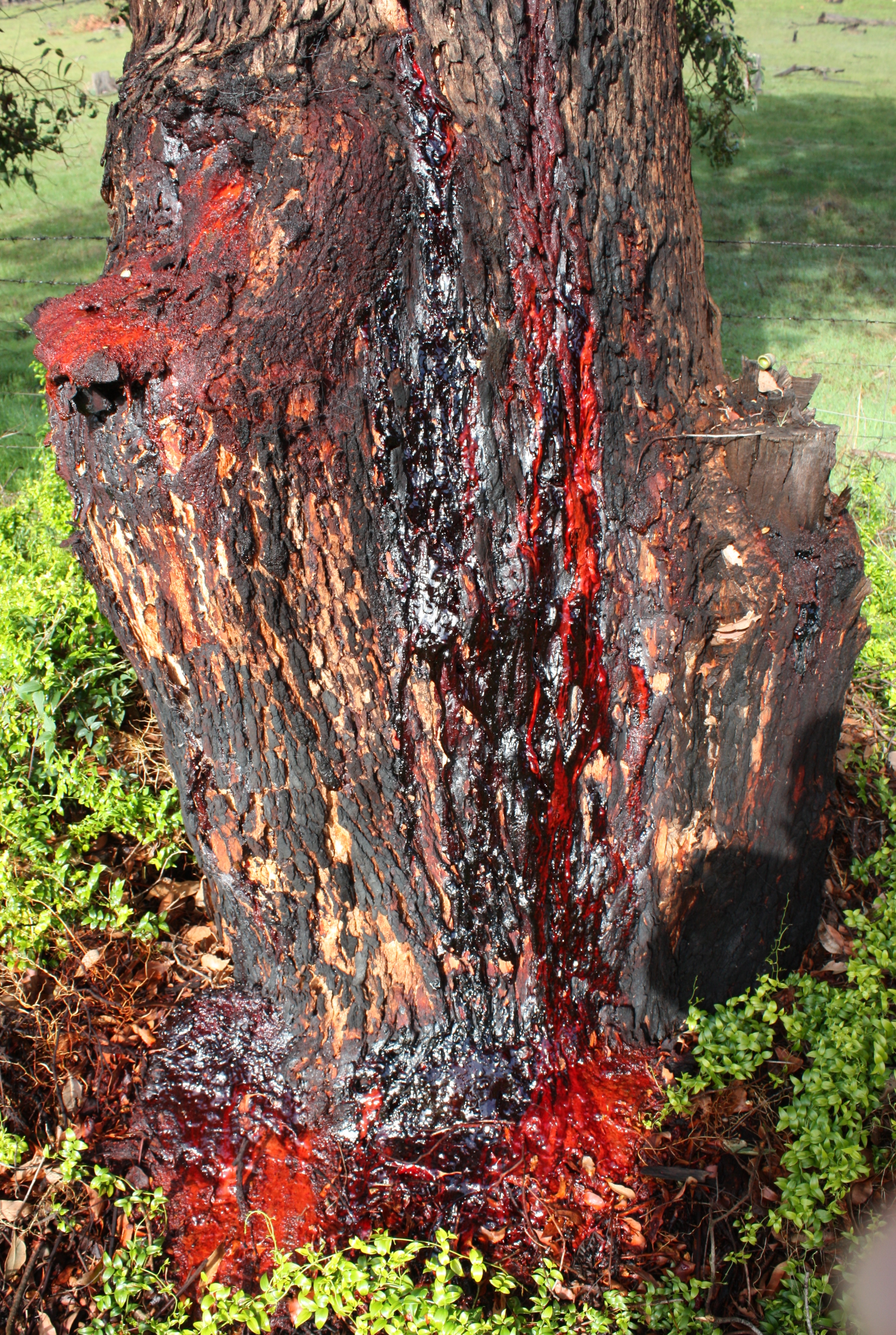|
Phlobaphene
Phlobaphenes (or phlobaphens, CAS No.:71663-19-9) are reddish, alcohol-soluble and water-insoluble phenolic substances. They can be extracted from plants, or be the result from treatment of tannin extracts with mineral acids (tanner's red). The name ''phlobaphen'' come from the Greek roots φλoιὀς (''phloios'') meaning bark and βαφή (''baphe'') meaning dye. No biological activities have currently been reported for phlobaphenes. Phlobaphenes from hawthorn fruits (''Fructus Crataegi'') may have a specific action on the coronary circulation. They are converted into humins in soils. Naturally formed phlobaphenes Natural phlobaphenes are the common bark, pericarp, cob glume and seed coat (''testa'') pigments. They have not been found in flowers, unless the brown and black pigments in the involucrum of certain compositae are found to be of the phlobaphene type. In bark, phlobaphenes accumulate in the phellem layer of cork cambium, part of the suberin mixture. ... [...More Info...] [...Related Items...] OR: [Wikipedia] [Google] [Baidu] |
Kinotannic Acid
Kinotannic acid is the chief constituent of the kino (gum), kino gum, of which it contains 70 to 80 per cent. Kino also contains kino red, a phlobaphene produced from kinotannic acid by oxidation. It is closely related to the tannin from catechu; its non-glucosidal nature was established by Bergholz. Properties When dry distilled it yields pyrocatechine and protocatechinic acid. It is soluble in water. Solutions are precipitated by lead or copper salts. Kinotannic acid is degraded by oxidation when exposed to air. References Tannins {{polyphenol-stub ... [...More Info...] [...Related Items...] OR: [Wikipedia] [Google] [Baidu] |
Cinchona Officinalis 001
''Cinchona'' (pronounced or ) is a genus of flowering plants in the family Rubiaceae containing at least 23 species of trees and shrubs. All are native to the tropical Andean forests of western South America. A few species are reportedly naturalized in Central America, Jamaica, French Polynesia, Sulawesi, Saint Helena in the South Atlantic, and São Tomé and Príncipe off the coast of tropical Africa, and others have been cultivated in India and Java, where they have formed hybrids. ''Cinchona'' has been historically sought after for its medicinal value, as the bark of several species yields quinine and other alkaloids. These were the only effective treatments against malaria during the height of European colonialism, which made them of great economic and political importance. Trees in the genus are also known as fever trees because of their antimalarial properties. The artificial synthesis of quinine in 1944, an increase in resistant forms of malaria, and the emergence of a ... [...More Info...] [...Related Items...] OR: [Wikipedia] [Google] [Baidu] |
Kino (gum)
Kino is a botanical gum produced by various trees and other plants, particularly bloodwood species of eucalypts ('' Angophora'', ''Corymbia'', ''Eucalyptus'') and '' Pterocarpus'', in reaction to mechanical damage, and which can be tapped by incisions made in the trunk or stalk. Many ''Eucalyptus'', ''Angophora'' and ''Corymbia'' species are commonly referred to as 'bloodwoods', as the kino usually oozes out a very dark red colour. Kino flow in angiosperms contrasts with resin flow in conifers. The word ''kino'' is of Indian origin. In Australia, "red gum" is a term for kino from bloodwood trees and red acaroid resin from ''Xanthorrhoea'' spp. Composition Astringent tannin compounds are a major active component of kinos.Edited by Pearsall, J., and Trumble, B., ''The Oxford English Reference Dictionary'', Oxford University Press, Second Edition, 1996, The chief constituent of kino is kinotannic acid, of which it contains 70 to 80 per cent. It also contains kino red, a phlobap ... [...More Info...] [...Related Items...] OR: [Wikipedia] [Google] [Baidu] |
Common Tormentil
''Potentilla erecta'' (syn. ''Tormentilla erecta'', ''Potentilla laeta'', ''Potentilla tormentilla'', known as the (common) tormentil, septfoil or erect cinquefoil ) is a herbaceous perennial plant belonging to the rose family (Rosaceae). Description ''Potentilla erecta'' is a low, clump-forming plant with slender, procumbent to arcuately upright stalks, growing tall and with non-rooting runners. It grows wild predominantly in Europe and western and is listed as a species of least concern. It is very common in grasslands, heaths, moors and mountains, bogs including roadsides and pastures, mostly on acidic soils but avoiding chalk. It is a component of British National Vegetation Classification community M25 (''Molinia caerulea''–''Potentilla erecta'' mire). North America In North America ''Potentilla erecta'' is found in the east as an introduced species. Uses The rhizomatous root is thick. It has little value for food use because of its bitterness and low caloric value. ... [...More Info...] [...Related Items...] OR: [Wikipedia] [Google] [Baidu] |
Quercitannic Acid
Quercitannic acid is one of the two forms of tannic acid found in oak bark and leaves. The other form is called gallotannic acid and is found in oak galls. The quercitannic acid molecule is also present in quercitron, a yellow dye obtained from the bark of the Eastern black oak (''Quercus velutina''), a forest tree indigenous in North America. It is described as a yellowish brown amorphous substance. In 1838, Jöns Jacob Berzelius wrote that quercitannate is used to dissolve morphine. In 1865 in the fifth volume of "A dictionary of chemistry", Henry Watts wrote : It exhibits with ferric salts the same reactions as gallotannic acid. It differs however from the latter in not being convertible into gallic acid, and not yielding pyrogallic acid by dry distillation. It is precipitated by sulfuric acid in red flocks. ( Stenhouse, Ann. Ch. Pharm. xlv. 16.) According to Rochleder (ibid lxiii. 202), the tannic acid of black tea is the same as that of oak-bark. In 1880, Etti gave for ... [...More Info...] [...Related Items...] OR: [Wikipedia] [Google] [Baidu] |
Cinchona
''Cinchona'' (pronounced or ) is a genus of flowering plants in the family Rubiaceae containing at least 23 species of trees and shrubs. All are native to the Tropical Andes, tropical Andean forests of western South America. A few species are reportedly naturalization (biology), naturalized in Central America, Jamaica, French Polynesia, Sulawesi, Saint Helena in the South Atlantic, and São Tomé and Príncipe off the coast of tropical Africa, and others have been cultivated in India and Java, where they have formed hybrids. ''Cinchona'' has been historically sought after for its medicinal value, as the bark of several species yields quinine and other alkaloids. These were the only effective treatments against malaria during the height of European colonialism, which made them of great economic and political importance. Trees in the genus are also known as fever trees because of their antimalarial properties. The artificial Quinine total synthesis, synthesis of quinine in 1944, ... [...More Info...] [...Related Items...] OR: [Wikipedia] [Google] [Baidu] |
Humin
Humins are carbon-based macromolecular substances, that can be found in soil chemistry or as a by-product from saccharide-based biorefinery processes. Humins in soil chemistry Soil consists of both mineral (inorganic) and organic components. The organic components can be subdivided into fractions that are soluble, largely humic acids, and insoluble, the humins. Humins make up about 50% of the organic matter in soil. Due to their very complex molecular structure, humic substances, including humin, do not correspond to pure substances but consist of a mixture of many compounds that remain very difficult to characterize even using modern analytical techniques. Humins from biomass sources Humins also produced during the dehydration of sugars, as occurs during the conversion of lignocellulosic biomass to smaller, higher value organic compounds such as 5-hydroxymethylfurfural (HMF). These humins can be in the form of either viscous liquids or solids depending on the process conditi ... [...More Info...] [...Related Items...] OR: [Wikipedia] [Google] [Baidu] |
Crataegus
''Crataegus'' (), commonly called hawthorn, quickthorn, thornapple, Voss, E. G. 1985. ''Michigan Flora: A guide to the identification and occurrence of the native and naturalized seed-plants of the state. Part II: Dicots (Saururaceae–Cornaceae)''. Cranbrook Institute of Science and University of Michigan Herbarium, Ann Arbor, Michigan. May-tree,Graves, Robert. ''The White Goddess: A Historical Grammar of Poetic Myth'', 1948, amended and enlarged 1966, New York: Farrar, Straus and Giroux. whitethorn, Mayflower or hawberry, is a genus of several hundred species of shrubs and trees in the family Rosaceae, native to temperate regions of the Northern Hemisphere in Europe, Asia, North Africa and North America. The name "hawthorn" was originally applied to the species native to northern Europe, especially the common hawthorn ''C. monogyna'', and the unmodified name is often so used in Britain and Ireland. The name is now also applied to the entire genus and to the related Asi ... [...More Info...] [...Related Items...] OR: [Wikipedia] [Google] [Baidu] |
Greek And Latin Roots In English
The English language uses many Greek and Latin roots, stems, and prefixes. These roots are listed alphabetically on three pages: * Greek and Latin roots from A to G * Greek and Latin roots from H to O * Greek and Latin roots from P to Z. Some of those used in medicine and medical technology are listed in the List of medical roots, suffixes and prefixes. See also * Classical compound * English words of Greek origin * English prefixes * Greek language * Hybrid word * Interlingua * International scientific vocabulary * Latin * Latin influence in English * ''Lexicon Mediae et Infimae Latinitatis Polonorum'' * List of Greek phrases * List of Latin abbreviations * List of Latin and Greek words commonly used in systematic names * List of Latin legal terms * List of Latin phrases * List of Latin words with English derivatives * List of Latinised names * Romanization (cultural) Romanization or Latinization (Romanisation or Latinisation), in the historical and cultural meanings of ... [...More Info...] [...Related Items...] OR: [Wikipedia] [Google] [Baidu] |
Corymbia Calophylla Kino
''Corymbia'', commonly known as bloodwoods, is a genus of about one hundred species of tree that, along with ''Eucalyptus'', ''Angophora'' and several smaller groups, are referred to as eucalypts. Until 1990, corymbias were included in the genus ''Eucalyptus'' and there is still considerable disagreement among botanists as to whether separating them is valid. As of January 2020, ''Corymbia'' is an accepted name at the Australian Plant Census. Description Eucalypts in the genus ''Corymbia'' are trees, sometimes mallee-like, that either have rough, fibrous or flaky bark, or smooth bark that is shed in small flakes or short strips. Young plants and coppice regrowth have leaves that differ from adult leaves. The adult leaves are arranged alternately (strictly disjunct opposite, but appearing alternate), with oil glands. The flower buds are arranged in groups on a branching peduncle, each branch usually with seven buds, but with the pedicels of differing lengths, so that the inflo ... [...More Info...] [...Related Items...] OR: [Wikipedia] [Google] [Baidu] |
Humulus
''Humulus'', or hop, is a small genus of flowering plants in the family Cannabaceae. The hop is native to temperate regions of the Northern Hemisphere. Hops are the female flowers (seed cones, strobiles) of the hop species '' H. lupulus''; as a main flavor and aroma ingredient in many beer styles, ''H. lupulus'' is widely cultivated for use by the brewing industry. Description Although frequently referred to in American literature as the hops "vine", it is technically a bine; unlike vines, which use tendrils, suckers, and other appendages for attaching themselves, bines have stout stems with stiff hairs to aid in climbing. In British literature the term "vine" is generally reserved for the grape genus ''Vitis''. ''Humulus'' is described as a twining perennial herbaceous plant which sends up new shoots in early spring and dies back to the cold-hardy rhizome in autumn. Hop shoots grow very rapidly, and at the peak of growth can grow per week. Hop bines climb by wrapping clockwise ... [...More Info...] [...Related Items...] OR: [Wikipedia] [Google] [Baidu] |
Chocolate Liquor
Chocolate liquor, also called cocoa liquor, paste or mass, is pure cocoa in liquid or semi-solid form. It is produced from cocoa bean nibs that have been fermented, dried, roasted, and separated from their skins. The nibs are ground to the point cocoa butter is released from the cells of the bean and melted, which turns cocoa into a paste and then into a free-flowing liquid. The liquor is either separated into (non-fat) cocoa solids and cocoa butter, or cooled and molded into blocks, which can be used as unsweetened baking chocolate. Like the nibs from which it is produced, it contains both cocoa solids and cocoa butter in roughly equal proportion. Its main use (often with additional cocoa butter) is in making chocolate. The name ''liquor'' is used not in the sense of a distilled, alcoholic substance, but rather the older meaning of the word, meaning 'liquid' or 'fluid'. The terms ''paste'' and ''mass'' are also commonly used. According to American legislation, chocolate liquo ... [...More Info...] [...Related Items...] OR: [Wikipedia] [Google] [Baidu] |




